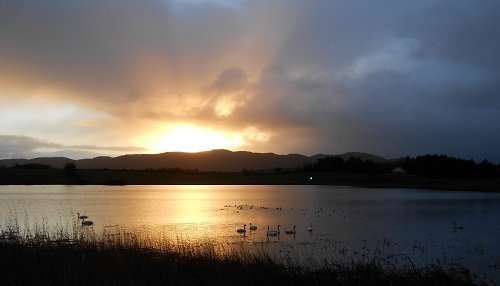Ireland and the Short Chronology – Part 2
At the conclusion of Part 1 of this series I quoted the Irish scholar T F O’Rahilly: “Dall cách i gceird ar-oile, which, freely interpreted, means that one generally makes a fool of oneself when one intrudes into a subject which is not one’s own.” (O’Rahilly 1946:vi). At the risk of making a fool of myself, I will now intrude into a subject which is not my own and suggest a possible solution to the three problems I explored in Part 1.
A Shortened Chronology
I believe that these problems—the Celtic Problem, the Language Problem and the Genetic Problem—can each be resolved by adopting a shortened chronology of the prehistory of Ireland (and Britain), one that is in line with the Short Chronology of the Ancient World referred to in Part 1. One of the foundation stones of the Short Chronology is the dating of the end of the last glacial period:
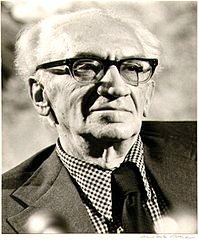
One of Velikovsky’s most fundamental and radical premises was that cosmic catastrophes occurred within the memory of mankind, and even within the period of recorded human history. In this spirit he presented, especially in Earth in Upheaval (1955), manifold proofs that the mass extinctions at the end of the Pleistocene took place no more than a few thousand years ago, with much of the evidence pointing to 1500 or 1400 BC as the cut-off point. In my own writings, and especially in The Genesis of Israel and Egypt (first published in 1997), I have presented much further evidence in support of this contention, and have argued, along with Gunnar Heinsohn, that high civilization—in the Americas, the Middle East, India and China—arose immediately after the selfsame event which decimated the Pleistocene wildlife. Indeed, it was this very catastrophe which provided much of the impetus for the rise of these cultures. (Emmet Sweeney)
Conventional wisdom maintains that the end of the Pleistocene Epoch, which brought the last glacial period to a close, occurred much earlier than this. Curiously, though, glaciologists cannot agree on a precise timeframe. The results of online searches suggest that 9700 BCE is the favoured date for the event, but some sites push it as far back as 13 000 BCE, while others maintain that it did not occur until as late as 8000 BCE. This long chronology was established in the middle of the 20th century by the radiocarbon dating of artifacts from the late Pleistocene and the early Holocene:
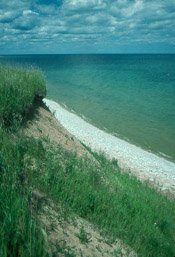
The most recent retreat of the Northern Hemisphere continental glacial ice is one marker representing the termination ... of the Pleistocene and the beginning of the Holocene (Recent) geologic epoch ... One area where geological evidence for this glacial ... episode at the very end of the Pleistocene can be viewed is a locality known as the Two Creeks Fossil Forest ... In an early group of 14C dates run by Libby, seven samples of wood and peat collected at the Two Creeks forest bed and from two nearby sites exhibiting the same stratigraphy were dated. The resultant 14C ages ranged from 10,877 ± 740 BP (C-308) to 12,168 ± 1500 BP (C-536) and were averaged for a composite age of 11,404 ± 350 BP. (Taylor & Bar-Yosef 2016)
Ice-cores from Greenland are also cited in support of the long chronology:
Ice core records from Greenland have been instrumental in investigating past abrupt climate change. As compared with other sedimentary records, the ice core records have unparalleled temporal resolution and continuity ... The newest Greenland ice core, from the North Greenland Ice Core Project (NGRIP), has been measured at very high resolution for water isotope ratios, dust, and impurity concentrations. This allows researchers for the first time to follow the ice core proxies of Greenland temperature, accumulation, moisture origin, and aerosol deposition at subannual resolution over the very abrupt climate changes in the period from 15.5 to 11.0 thousand years ago (ka) (measured from 2000 AD throughout this study) ... the warming transition at 11.7 ka lasted 60 years ... correspond[ing] to a warming of more than 10 K ... d18O records from the GRIP ... GISP2 ... and DYE-3 ... ice cores across the 11.7 ka transition show a similar duration. (Steffensen et al 2008)
Libby’s radiocarbon dates came as a surprise to the geologists and glaciologists, who still believed that the end of the Pleistocene had been a relatively recent event. Writing in 1942, just a few years before the radiocarbon revolution, Hallam L Movius noted:
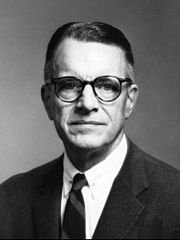
On the basis of the geochronological dating [of the receding ice sheets] established in Scandinavia, the ice reached Ragunda [in northern Sweden] about 6800 BC ... and this point is regarded by geologists as marking the beginning of Post-Glacial time. (Movius 1942:7)
Conventional historians, it seems, are always happy to move dates into the past, but refuse to countenance any realignment that involves moving the timescale in the opposite direction. For the sake of argument, however, let us assume that the currently accepted dates are erroneous and that Velikovsky and his followers are correct: the Pleistocene Epoch actually ended around 1500 BCE. One immediate consequence of this realignment is the removal of eight thousand years or so from the post-glacial history of Ireland and Britain. The entire prehistory of these islands takes up a single millennium—if even that—and there is no longer any need to invent hundreds of generations of mysterious pre-Celtic peoples to fill the void. In one stroke we have removed several anomalies:
- The Celts did exist
- The Celts did colonize these islands in a series of “invasions” as recorded in our literature
- The Celts were the first post-glacial settlers of these islands
- All the prehistoric cultures and artifacts of these islands were Celtic
The Mesolithic hunter-gatherers, who supposedly migrated here about 9000 years ago, were actually the first Celtic settlers, who probably arrived several centuries after 1000 BCE. Being few in number, and finding the land densely forested from coast to coast, they were obliged to live semi-nomadic lives, hunting, fishing and gathering for a livelihood. They did not have the manpower to clear forests, and they probably did not know how to till fields. (If the Ice Age ended around 1500 BCE, it must have been some time after this date that the practice of agriculture was reintroduced.) As new Celtic settlers arrived, the population grew. Forests were cleared and agriculture was established. Pottery was introduced and trade flourished. This is the so-called Neolithic. Further waves of Celts introduced copper, bronze and iron metallurgy.
Geneticists cannot distinguish the so-called Celts of the Iron Age from the earlier inhabitants of these islands because both populations were Celts and they were separated by centuries, not millennia. Linguists cannot find a single trace of any pre-Celtic languages in these islands because no pre-Celtic languages were ever spoken in these islands (at least not post-glacially). Archaeologists have indeed found an abundance of Celtic artifacts, but they have misdated them and assigned them to fictitious pre-Celtic cultures. Moreover, because the first post-glacial settlers only settled these islands quite recently, there is no need to suggest an improbably early date for the emergence of the Celtic family of languages: Proto-Celtic became a distinct dialect of Indo-European sometime after 1500 BCE, and dialects or daughter languages of Proto-Celtic were brought to these islands some centuries after that.
The Dark Ages and the Megaliths
In Pillars of the Past, Charles Ginenthal hypothesizes that the fall of the Roman Empire and the ensuing Dark Ages were triggered not by Barbarian invasions or a climatic downturn but by a chronic pandemic of bubonic plague known as the Justinian Plagues:
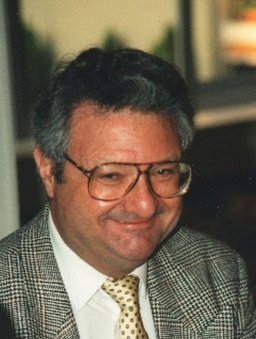
The only catastrophe where we have specific references to the population of the Roman world being devastated and depopulated, where people abandoned their towns and cities, and where the agricultural lands turned back to wilderness, is that of the great “Justinian plagues.” These plagues were greater than any others that devastated the world. This was the only one that reduced the European/Afro-Asian Roman highly advanced civilization to one in which the whole population at the level of subsistence of the Neolithic and Bronze Ages in Europe ... entire territories were depopulated, or cities became ghost towns, being abandoned or engulfed by pestilence while whole populations disappeared. To repeat, no other plague in the civilized world ever left its population living back in the Neolithic and Bronze Ages. We will further show that this plague encompassed the world from the British Isles to Japan, driving their populations back to almost prehistoric levels. It was the first pandemic to strike humanity on so great a scale, and attacked a population with little or no immunity to it. (Ginenthal 2013:398-399)
One scholar has summarized the devastation caused by the Justinian Plagues in the following words:
In the summer of 541 AD [during the reign of the Roman Emperor Justinian] a deadly infectious disease broke out in the Egyptian port city of Pelusium, located on the eastern edge of the Nile delta. It quickly spread eastward along the coast to Gaza and westward to Alexandria. By the following spring it had found its way to Constantinople, capital of the Roman Empire. Syria, Anatolia, Greece, Italy, Gaul, Iberia, and North Africa: none of the lands bordering the Mediterranean escaped it. Here and there, it followed river valleys or overland routes and thus penetrated far into the interior, reaching, for example, as far east as Persia or as far north, after another sea crossing, as the British Isles.
The disease remained virulent in these lands for slightly more than two centuries although it never settled anywhere for long. Instead, it came and went, and ... its appearances were unannounced. Overall, there was not a decade in the course of those two centuries when it was not inflicting death somewhere in the Mediterranean region. In those places where it appeared several times, the intervals between recurrences ranged from about six to twenty years. And then, in the middle of the eight century, it vanished with as little ceremony as when it first arrived. (Little 2007:3, quoted in Ginenthal 2013:400)
There are many references to outbreaks of plague in medieval Irish manuscripts. The Annals of Ulster record an outbreak of a plague called blefed in the year 545, just four years after the outbreak at Pelusium. The origin of this name is not known: it may refer to the buboes characteristic of the Black Death. Further outbreaks of the “great mortality” and other plagues are recorded in the following years:
- 549: Magna mortalitas [“A great dying”]
- 554: A pestilence ie leprosy called in samthrosc [“the summer ??”]
- 556: A great dying ... ie in chron chonaill (in buide chonaill) [“the yellow ?fever”]
- 664–668
- 680
- 683–685: Beginning of the dying of children.
- 700–703: The cattle mortality broke out in Ireland ... Famine and pestilence prevailed in Ireland for three years, so that man ate man.
- 708: The murrain of cows raged again.
- 742
Ginenthal believes that the megalithic builders and the Bell-Beaker Folk, who are conventionally placed in the Neolithic and Bronze Ages, actually belong to the Dark Ages. The Justinian Plagues took such a toll on the ancient world that the survivors reverted for several centuries to a debased and largely illiterate level of civilization. While literacy and some knowledge of science and technology survived in isolated settlements—Christian monasteries, for example—most communities were reduced to a subsistence level of existence reminiscent of a primitive Stone Age society. Consequently, the artifacts they left behind have been misdated by the archaeologists and placed in the wrong millennium. Among the sites that he believes have been drastically misdated are:
- Stonehenge in England
- Skara Brae and Maes Hawe in the Orkney Islands
- Çatalhöyük and Göbekli Tepe in Turkey
- Newgrange in Ireland.
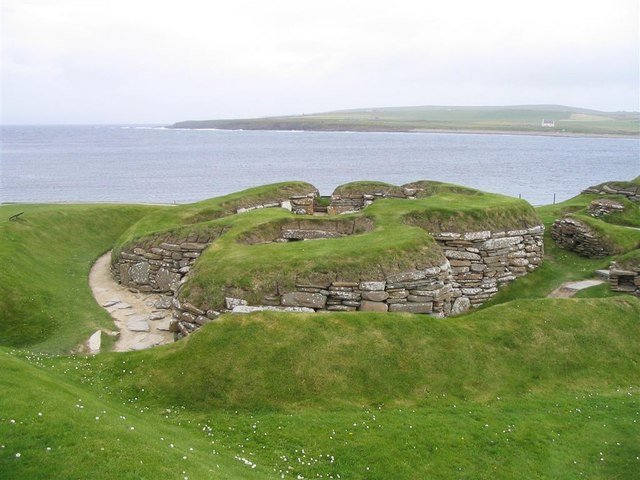
Today we Irish have become so used to the idea that Newgrange is a Neolithic monument more than five thousand years old that it may sound ludicrous to suggest that it was actually constructed after the fall of the Rome; but the fact is that little more than a century ago the age of the megaliths was still being hotly debated, with some scholars claiming that they were of late-Roman or even post-Roman construction:
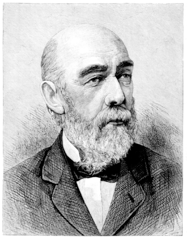
Three Roman coins found in different parts, at different times, and with the torques and rings, are, it seems, quite sufficient to prove that it [Newgrange] cannot have been erected before 380, while the probable date for its completion may be about 400 A.D. It may, however, have been begun fifty or sixty years earlier. (Fergusson 1872:210)
It would be wise to keep this hypothesis in mind while attempting to reconstruct the true prehistory of Ireland and Britain. But we must not be too hasty. We know that there were Celts living in these islands in the 4th century BCE. Celtic names for the two islands and their inhabitants—Priteni, Ierne, Albion—can be reliably traced back to that century, if not earlier (Koch 1986). We cannot, then, assign all the Neolithic and Bronze Age artifacts to the Dark Ages: something must be left for the earlier inhabitants, whose occupation lasted at least a millennium.
A Working Hypothesis
T F O’Rahilly’s Early Irish History and Mythology (1946) was an attempt to reconstruct the early history of Celtic Ireland using the native literary tradition and linguistic evidence. O’Rahilly was prepared to accept the archaeologists’ contention that the Celts were not the first people to colonize this part of the world:
It is needless to add that the Celts were not the first inhabitants of these islands.(O’Rahilly 1946:15-16, fn 1)
But O’Rahilly was a linguist and he was not interested in moulding his theories to fit the historical template of the archaeologists. The extensive written records of Ireland testified to the existence of the Celts and recorded a number of invasions by different Celtic tribes. O’Rahilly believed that a succession of such incursions was the best way to explain the literary and linguistic evidence. His researches led to a historical model which remains controversial to this day:
From a study of these popular traditions, supplemented by linguistic evidence and by the occasional testimony of classical authors, we can infer clearly that there were four groups of Celtic invaders of Ireland, viz., beginning with the earliest:
(1) The Cruthin (Priteni), after whom these islands were known to the Greeks as “the Pretanic Islands”. In early historical times they preserved their individuality best in the North of Britain, where they were known to Latin writers as Picti.
(2) The Builg, commonly called Fir Bolg, and also known as Érainn (Iverni). Their name (*Bolgī) identifies them with the Belgae of the Continent and Britain. According to Irish tradition they were of the same stock as the Britons; and their own invasion-legend tells how their ancestor Lugaid came from Britain and conquered Ireland.
(3) A group of tribes whom we may call the Laginian invaders and who included the Lagin, the Domnainn and the Gálioin ... According to their own invasion-legend they were in origin Gauls, who invaded Ireland from Armorica [Brittany]. Their conquest of Ireland was but a partial one, confined for practical purposes to considerable parts of Leinster and Connacht.
(4) The Goidels [Gaels], the latest of the Celtic invaders, and the only Q-Celts among them. They reached Ireland direct from Gaul, and their arrival cannot have been much anterior to the extinction of Gaulish independence (50 B.C.). (O’Rahilly 1946:15-17)
Is it merely a coincidence that a study of the literary evidence led O’Rahilly to infer the existence of four groups of Celtic invaders while a study of the archaeological evidence led the archaeologists to infer the existence of four principal cultural horizons? Using O’Rahilly’s model as a template, I propose the following as an initial working hypothesis for the true prehistory of Ireland:
| Celtic Invaders | Archaeological Culture | Short Chronology (BCE) |
|---|---|---|
| Cruthin (Priteni) | Mesolithic | 700 |
| Builg (Érainn) | Neolithic | 500 |
| Lagin, Domnainn, Gálioin | Bronze Age | 300 |
| Goidel | Iron Age | 100 |
It must be appreciated that this is only a first attempt at reconstructing the true chronology of Irish prehistory, so mistakes are to be expected. The dates suggested here are highly conjectural and should be regarded as temporary placeholders. Nevertheless, a number of correspondences between this model and the archaeology of the country are worthy of note.
Mesolithic Ireland
The earliest settlers of the Mesolithic are believed to have been hunter-gatherers. Curiously, The Book of Invasions does mention an early group of postdiluvian colonists of Ireland, the Fomorians, who did not practise agriculture:
The invasion of Cichol Gricenchos, who landed at Malahide Bay ... Fifty men and thrice fifty women was the tally of every ship of theirs ... They spent two hundred years fishing and fowling before the conquest of Partholón and the Battle of Magh Itha ... Cichol was slain and the Fomorians were destroyed. (Macalister 1939, Part 3, §218, modernized)
There is little evidence that the early Mesolithic settlers tilled the land. Evidence is even lacking for simple slash-and-burn agriculture. Nevertheless, there are some sites which appear to have been occupied by both hunter-gatherers and farmers:
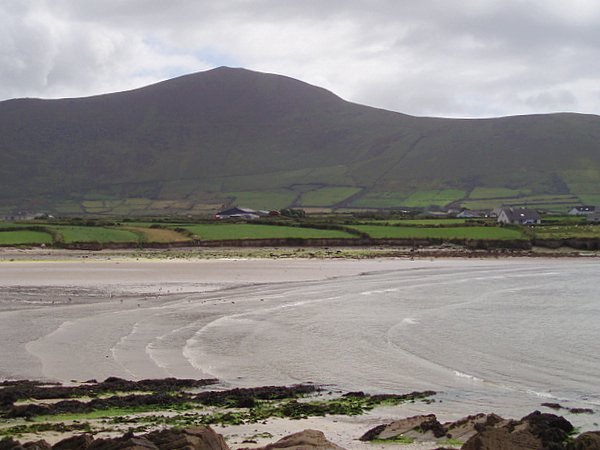
... the rarity of [Later Mesolithic] settlement sites with organic remains makes it very difficult to assess the economic patterns of these early hunters and foragers ... The range of stone implements which survives provides few clues and the investigated coastal middens are mostly imprecisely dated, and some, such as Ferriter’s Cove, Co. Kerry, are contemporary with communities who practised cereal cultivation and animal husbandry. (Waddell 2000:22)
If the Mesolithic folk were not tillers of the soil, there is still the possibility that they had domesticated some animals, such as the pig. At Mount Sandel in County Derry, the most celebrated Mesolithic site in Ireland, fish and pork were the staple diet of the occupants:
The faunal remains consisted entirely of burnt bone fragments and judging from the surviving evidence wild pig and fish were the principal sources of food ... pig bones represented 98% of the mammal remains recovered and analysis revealed substantial numbers of young pig ... winter occupation was demonstrated by certain features of the pig bones recovered: the pattern of bone fusion implied young animals less than two years old, probably butchered in late winter. Winter occupation was also suggested by the presence of foetal pig bones (sows bear their young in April or May). (Waddell 2000:12)
Does the presence of such a profusion of young pigs imply that the occupants of this site were practising animal husbandry? The use of “age profiles” to infer domestication is still a controversial subject in the field of anthropology, so it is probably wise to consider the matter unresolved. In favour of the use of this criterion as evidence of animal husbandry were Dexter Perkins, Jr, and Patricia Daly:
As a hunter/predator, man apparently did not make any purposeful selection of particular age groups in the animals he hunted ... hunters, unlike animal predators, take all age groups, including a high percentage of adults. But the evidence indicates that the earliest stock raisers in the Near East selected more immature animals than adults to be killed, thus maintaining an adult breeding population. (Perkins & Daly 1974:80)
A divergent opinion was expressed two years later by S Collier and J P White:
[W]hen the only evidence for domestication is a high proportion of immature animals, there is no evidence for domestication. (Collier & White 1976:101)
Because the Irish Mesolithic is believed to have occupied the period between 7000 and 4000 BCE, the question of animal husbandry is not even considered. But if Mount Sandel was actually occupied by Celts who arrived in the country no earlier than, say, the 8th century BCE, the possibility of animal husbandry should not be discounted. Further investigation in this area is required.
Neolithic Ireland
The cultivation of crops, we are told, was introduced into Ireland during the Neolithic period. According to our working hypothesis, the people who settled Ireland after the “Mesolithic” Priteni were the Builg or Érainn, who were also known in Irish literature as the Fir Bolg. Curiously, these people were associated in literary tradition with the cultivation of the soil:
Next was the invasion of the Fir Bolg ... They came from Greece, fleeing from the impost which the Greeks had laid upon them: carrying clay to rocky flagstones and transforming them into flowering plains ... They were named from the bags in which they used to carry the earth. (Macalister 1939, Part 4, §§286-287, modernized)
On the other hand it is also related that:
No raths [Irish ringforts] are reckoned to have been constructed in the time of the Fir Bolg, nor lakes to have burst forth, nor plains to have been cleared. (Macalister 1939, Part 4, §290, modernized)
The initial clearing of Ireland’s lowland forests was a direct consequence of the introduction of farming. Although the Fir Bolg are not credited with this deed, their predecessors in The Book of Invasions are:
Twelve plains were cleared by Nemed in Ireland . (Macalister 1939, Part 3, §240)
O’Rahilly believed that the people of Nemed—the Nemedians, whose invasion of Ireland preceded that of the Fir Bolg—were the same people as the Fir Bolg, and that the invasion of the Fir Bolg was merely a literary variant of the Nemedian conquest:
... the invasion of Nemed is plainly the invasion of the Érainn or Fir Bolg. (O’Rahilly 1946:76)
So it is possible that we have here a genuine tradition that it was the Builg who first cleared the forests and tilled the land. But even earlier than the Nemedian conquest of Ireland was that of the Partholonians, alluded to above. These people, to whom O’Rahilly ascribes no historicity, are credited with the introduction of both cattle and the tilling of the soil:
And among Partholón’s followers were his seven husbandmen ... Of his company were the four oxen that ploughed the land for him ... Of his company were his two merchants, Iban and Eban: Iban introduced gold to Ireland, while Eban introduced cattle. (Macalister 1939, Part 2, §225, modernized)
Bronze Age Ireland
Another innovation attributed to the Fir Bolg could be cited in support of an alternative interpretation of the role they played in Irish prehistory, namely that they represented the archaeologists’ Bronze Age warriors:
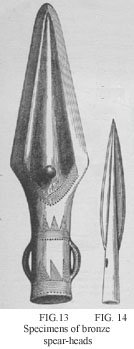
Nine kings of the Fir Bolg reigned in Ireland ... Rindal, for six years: in his time points were first placed on weapons. (Macalister 1939, Part 4, §296, modernized)
O’Rahilly, accepting the conventional teaching that the Bronze Age in Ireland was pre-Celtic, thought that this referred to iron heads:
Worth noting, perhaps, is a statement in [The Book of Invasions] to the effect that it was in the time of Rinnal, king of the Fir Bolg, that weapons were first provided with points, i.e. with iron heads; previously only wooden shafts had been used. Possibly this represents a genuine tradition that iron weapons were first introduced by the Fir Bolg. (O’Rahilly 1946:76-77)
But bronze-tipped weaponry preceded iron-tipped, so this could equally represent a genuine tradition that it was the Bolgic invaders who introduced the Bronze Age to Ireland. If this is accepted, does this mean that agriculture was introduced earlier by the Priteni? It is currently accepted that agriculture was introduced in the Stone Age, but clearing the extensive forests of Ireland with only stone-tipped axes would have been a formidable task. Perhaps we should bear in mind the skepticism of several 19th–century Irish antiquarians, who were reluctant to accept the relatively new Three-Age system (a Stone Age followed by a Bronze Age followed by an Iron Age). Is it really certain that the forests were cleared before the introduction of metallurgy? When agriculture was introduced to Ireland, the lowlands were densely covered by forests of oak and elm. Clearing these hardwoods with nothing but rudely fashioned stone axes would have been a huge undertaking, perhaps even an impossible one:
It has often been claimed that early agriculturists elsewhere in Europe cleared the land of trees with axe and fire—the “slash-and-burn” method ... At present there is little, if any, evidence for the use of this method in Britain or Ireland. (Waddell 2000:29)
Of course, if one believes that agriculture came to Ireland before 4000 BCE, then one is more or less obliged to place it in a pre-metallurgic era. But if agriculture was actually introduced by the Celts around 500 BCE, then the possibility arises that the first Irish farmers had some metallic implements—including carburized iron, or steel—which would have facilitated the task of deforestation.
As to the date of the Bolgic invasion, it is intriguing to note that the late compilers of The Book of Invasions (12th century) synchronized the arrival of the Fir Bolg with the first year of the reign of the Persian emperor Cyrus the Great, which is usually placed in 559 BCE:
Those are the thirty-seven years that the Fir Bolg were in Ireland—from the first year of the reign of Cyrus son of Darius to the seventh year of Cambyses son of Cyrus. (Macalister 1939, Part 4, §302)
This is in close accord with O’Rahilly’s surmise that:
... the overthrow of the Priteni by Bolgic invaders took place within the sixth–fourth centuries B.C. (O’Rahilly 1946:84)
Iron Age Ireland
In Irish literary tradition O’Rahilly’s third wave of Celtic invaders, the Lagin, were believed to be named after the distinctive type of spear with which they were armed:
The Laginian pedigrees open with a discussion of the origin of the name of the Lagin, who are said to have been so called from the láigne or spears with which they were armed when they came to Ireland ... (O’Rahilly 1946:104)
Closely related to the Lagin was another people known in the literary sources as the Gálioin or Gailing. According to one tradition they too owed their name to their distinctive spears:
In the attempts that were made to find etymologies for Gálioin and Gailing the first part of each name was sometimes identified with gaí, “spear”. This may well be correct. (O’Rahilly 1946:459)
Is it possible that these Celts were the mysterious Bronze Age warriors of the archaeologists, whose use of bronze weaponry was such an innovation in Irish prehistory that it gave them their name? If, on the other hand, we associate the Fir Bolg with the Bronze Age, then the weapons of the Lagin would have been made of carburized iron—steel—an even more formidable metal.
O’Rahilly believed that the fourth and final wave of Celtic invaders, the Goidels or Gaels, came to Ireland from Gaul, and not from Spain, as the literary traditions assert:
Regarding the earlier home of the Goidels ... For more reasons than one we cannot accept the “learned” Irish view that they came from Spain ... hence they must have come to Ireland from Gaul ... Several pieces of evidence ... unite in suggesting that the Goidels were connected with the south-east of Gaul ... We must suppose that, before sailing to Ireland, a body of Q-Celts first migrated from south-east Gaul to the western coast. (O’Rahilly 1946:207)
The learned Irish view, as expressed in The Book of Invasions, records that the Goidels (or Milesians, as they are called) established two colonies in Ireland: one of these was settled by Éber, whose fleet landed at the mouth of the River Boyne on the east coast, the other by his brother Éremón, who made landfall somewhere in the southwest of the country. O’Rahilly has noted that the Goidelic, or Gaelic, settlers did indeed comprise two distinct but closely related tribes: the Connachta and the Eóganachta (O’Rahilly 1946, Chapter IX et passim).
The Connachta initially carved out a kingdom for themselves between the Boyne and the Liffey; at an early date they forced the Lagin of Leinster (the southeastern quarter of the island) to accept the imposition of a cattle tribute—the Bórama. At a subsequent but unknown date, they crossed the River Shannon and conquered the west of Ireland, to which they gave their name. In the early 5th century of the Common Era, their leader Niall of the Nine Hostages added Ulster to his domains.
The Eóganachta, in the meantime, had made themselves masters of Munster, the southwestern province of Ireland.
How do these events fit into the archaeological framework? This is a question that must be looked into.
To be continued.
References
- S Collier, J P White, “Get Them Young? Age and Sex Inferences on Animal Domestication in Archaeology”, American Antiquity, Society for American Archaeology, Washington, DC (1976), Volume 41, Number 1
- James Fergusson, Rude Stone Monuments in All Countries: Their Ages and Uses, John Murray, London (1872)
- Charles Ginenthal, Pillars of the Past, Volume IV, Forest Hill, New York (2013)
- John T Koch, “New Thoughts on Albion, Iernē, and the Pretanic Isles (Part One),” Proceedings of the Harvard Celtic Colloquium 6 (1986): 1-28.
- Lester K Little, “Life and Afterlife of the First Plague Pandemic”, Plague and the End of Antiquity: The Pandemic of 541–750, Lester K Little (editor), Cambridge (2007)
- R A S Macalister (translator and editor), Lebor Gabála Érenn (The Book of Invasions), Irish Texts Society, Dublin, Parts I-V (1938, 1939, 1940, 1941, 1956)
- Hallam L Movius, The Irish Stone Age, Cambridge University Press, Cambridge (1942)
- Thomas F O’Rahilly, Early Irish History and Mythology, Dublin Institute for Advanced Studies, Dublin (1946)
- Dexter Perkins, Jr, Patricia Daly, “The Beginning of Food Production in the Near East”, The Old World: Early Man to the Development of Agriculture, R Stigler (Editor), St Martins, London (1974)
- Jørgen Peder Steffensen et al, “High-Resolution Greenland Ice Core Data Show Abrupt Climate Change Happens in Few Years”, Science 321(5889):680-4 (July 2008). d18O is a measure of the ratio of two stable isotopes of oxygen (18O and 16O) in the water-ice of the core. Its value depends on the temperature at the time of precipitation, making it an ideal “proxy” for temperature.
- Emmet Sweeney, The First Civilizations and the End of the Pleistocene
- R E Taylor, Ofer Bar-Yosef, Radiocarbon Dating: An Archaeological Perspective, Routledge, Abingdon-on-Thames (2016)
- John Waddell, The Prehistoric Archaeology of Ireland, Worldwell Ltd, Bray (2000)
- Immanuel Velikovsky, Earth in Upheaval, Doubleday & Company, Inc, Garden City, New York (1955)
Image Credits
- Immanuel Velikovsky: Wikimedia Commons, Frederic Jueneman, Creative Commons License
- Two Creeks: Thomas A Meyer
- Hallam L Movius: Wikimedia Commons, Public Domain
- Charles Ginenthal: Dwardu Cardona
- Skara Brae: Wikimedia Commons, M J Richardson, Creative Commons License
- James Fergusson: Wikimedia Commons, Public Domain
- Ferriter’s Cove: Wikimedia Commons, Sharon Loxton, Creative Commons License
- Bronze Spear-Head: P W Joyce, A Smaller Social History of Ancient Ireland, Longman’s, Green & Company, London (1906) p 52, Public Domain
- Ballymagany Lough: Public Domain
